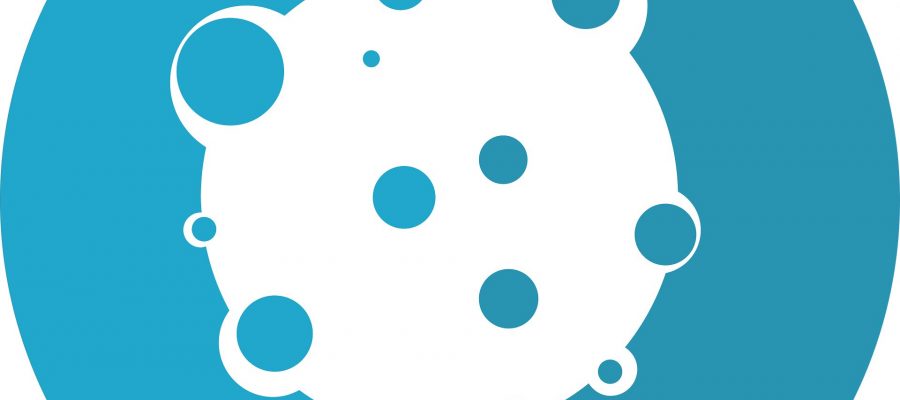
Patients with head and neck cancer who have more genetic material on chromosome 9 in their cancer cells survive three times longer after receiving immunotherapy than those with less genetic material there, a new study finds. Within both normal and cancerous cells, chromosomes are the 23 superstructures that house, organize, and protect the DNA code.
Led by researchers from NYU Grossman School of Medicine and UC San Diego Moores Cancer Center, the new study revolves around the human immune system, which can recognize cancer cells as abnormal and attack them. Cancer cells hide from the system by hijacking “checkpoint” sensors that keep the immune cells from attacking normal cells. As a leading immunotherapy class, checkpoint inhibitors use proteins called antibodies to make tumors “visible” again.
For head and neck cancer, however, only about 15 percent of patients respond well to immune checkpoint blockade, say the study authors. Antibodies only work if there are enough immune cells present to notice them, a state called “immune hot,” with the field understanding little about why so many patients have too few immune cells near their immune cold tumors. Specifically the study addresses HPV-negative head and neck squamous-cell (HNSC-HPVneg) carcinomas, the most common and lethal subtype of head and neck cancer with more 200,000 deaths globally per year.
Published online the week of November 14 in the Proceedings of the National Academy of Sciences (PNAS), the study found that HNSC-HPVneg cancer patients with a greater supply in their cancer cells of a region on chromosome 9 called 9p24.1 live 30 months on average after checkpoint inhibitor treatment, while those with lower amounts of it survive for 11 months on average.
“These findings reveal 9p24.1 as a genetically defined axis that promises to determine for the first time whether HNSC patients will do well or poorly on a checkpoint inhibitor,” says co-senior study author Teresa Davoli, Ph.D., an assistant professor in the Institute for Systems Genetics at NYU Langone Health.
“If we had a way to tell which patients would not respond, physicians could be quickly switching them to chemotherapies instead of exposing them to the considerable side effects that come with immunotherapy.”
Error-prone copying
After initial genetic mistakes have transformed normal cells into cancer cells, other types of changes can make matters worse, the researchers say. Among these are changes in chromosome numbers, with some cancer cells containing more chromosomes than normal, and others less. Such copy number changes happen because errors occur as a cell divides into two and splits its chromosomes equally among its daughter cells, which occurs billions of times as a single-celled human embryo multiplies to form a fetus. At each division, copying errors can lead to the doubling, loss of, or shortening of chromosomes from one generation of cells to the next
The likelihood of copying errors is much greater during the reckless growth driven by fast-dividing cancer cells, say the authors, which explains the “extensive” chromosome copy number changes present in most HPV-negative head and neck squamous-cell carcinomas. Head and neck cancers have many causes, and HPV-negative refers to those not caused by infection with the human papilloma virus (HPV). The much more common HPV-negative cancers are instead caused by smoking, alcohol use, and chromosome copy aberrations.
A 2021 study led by the same research team had shown that the chromosome arm 9p is more likely to be lost in immune cold tumors that do not respond to immunotherapy. 9p houses many genes, including those that encode interferons, a set of immune system signaling proteins that can trigger attack on cancer cells, at a location (locus) called 9p21. The earlier study however, did not identify which region (and genes) on 9p were responsible for “immune cold” checkpoint therapy resistance. The new work suggests that the 9p24.1 locus, more than a 9p21 locus, may be the key.
For the current analysis, the research team measured the extent of genomic loss of 9p24.1 in the cancer cells of patients with HNSC-HPVneg as captured by the National Cancer Institute’s massive database on cancer cell genetics, the Cancer Genome Atlas, as well as in patient datasets from a company called Caris Life Sciences. The team linked 9p24.1 loss for the first time to survival duration after checkpoint inhibitor therapy. When the researchers next did a “whole exome” analyses of ten solid tumors, they also found that extra 9p24.1 led to immune cold features in patients with other squamous cancer types, including lung squamous cancers, cervical squamous cancer, and esophageal squamous cell carcinoma.
9p chromosome sections are known to include genes—such as JAK2—Janus kinases (Jak) located on 9p24.1—that direct the production and response to interferons. In the team’s hypothesis, extra copies or amounts of 9p24.1 increase the interferon response signaling in cancer cells through Jak signaling, which is known to recruit more NK cells and T cells to invade and attack tumor cells.
“This finding justifies the development of 9p24.1 or Jak biomarker tests to select patients for checkpoint therapy,” says first study author Xin Zhao, Ph.D., a post-doctoral Scholar in Davoli’s lab. “Jak DNA or RNA expression may need to be incorporated into precision treatment strategies for any squamous or solid tumor in which 9p24.1 dosage shapes the environment near tumors.”
Along with Davoli and Zhao, a study author in the Institute for Systems Genetics at NYU Langone Health was Joy Bianchi. Also study authors were co-senior author Scott Lippman and Ezra Cohen from UC San Diego Moores Cancer Center; J. Silvio Gutkind and Ludmil Alexandrov at UC San Diego; William William Jr at the University of Texas and Hospital BP, Brazil; and Jim Abraham, Daniel Magee, and David Spetzler at Caris Life Sciences, Texas.
More information:
Zhao, Xin et al, Somatic 9p24.1 alterations in HPV– head and neck squamous cancer dictate immune microenvironment and anti-PD-1 checkpoint inhibitor activity, Proceedings of the National Academy of Sciences (2022). DOI: 10.1073/pnas.2213835119. doi.org/10.1073/pnas.2213835119
Journal information:
Proceedings of the National Academy of Sciences
Source: Read Full Article
